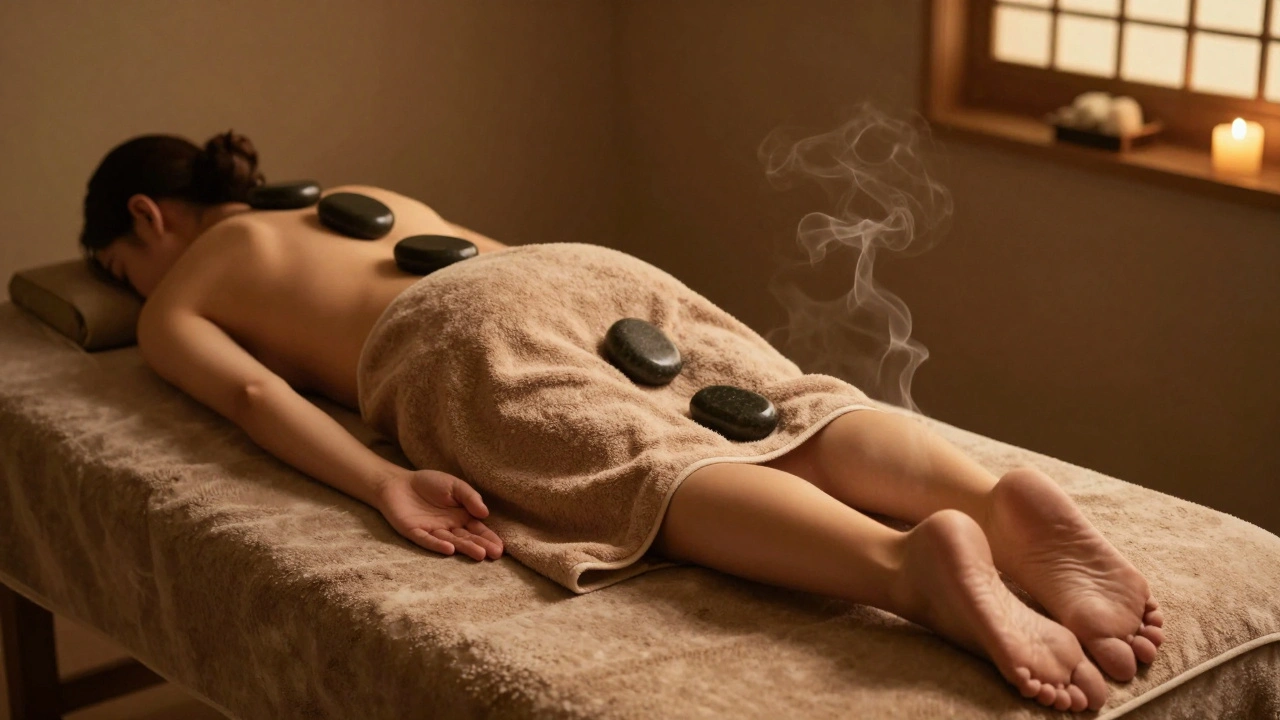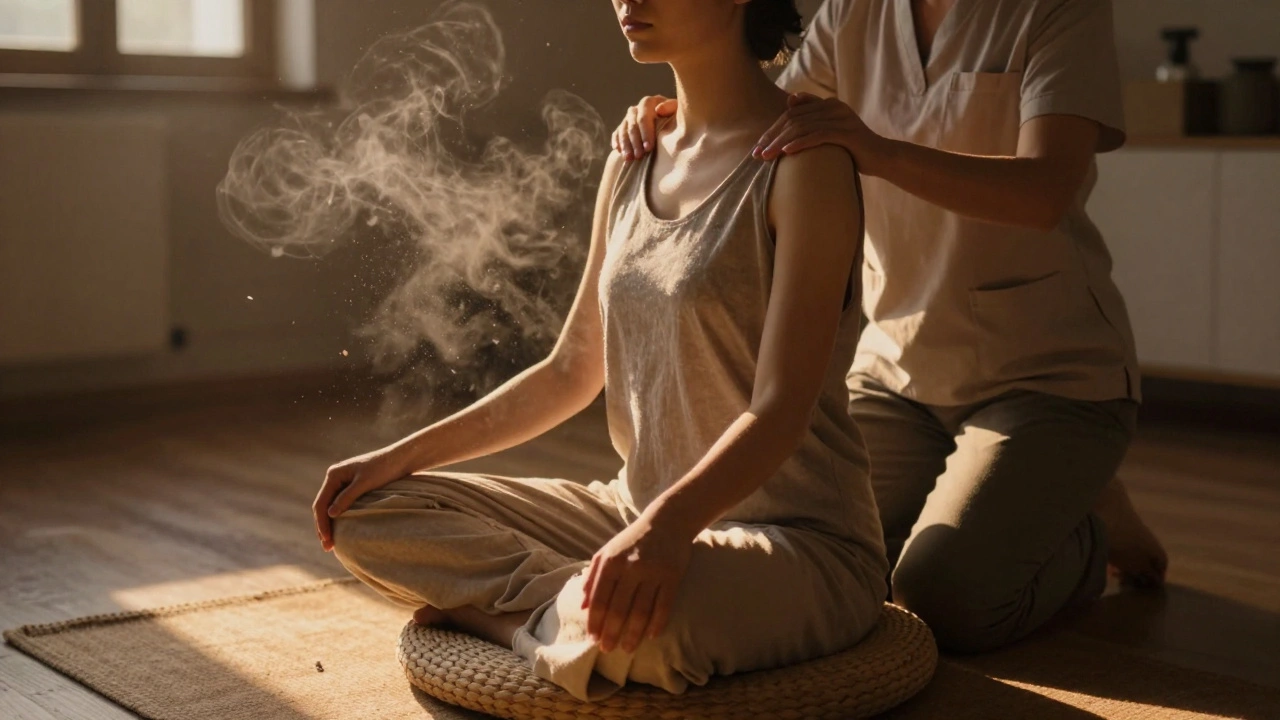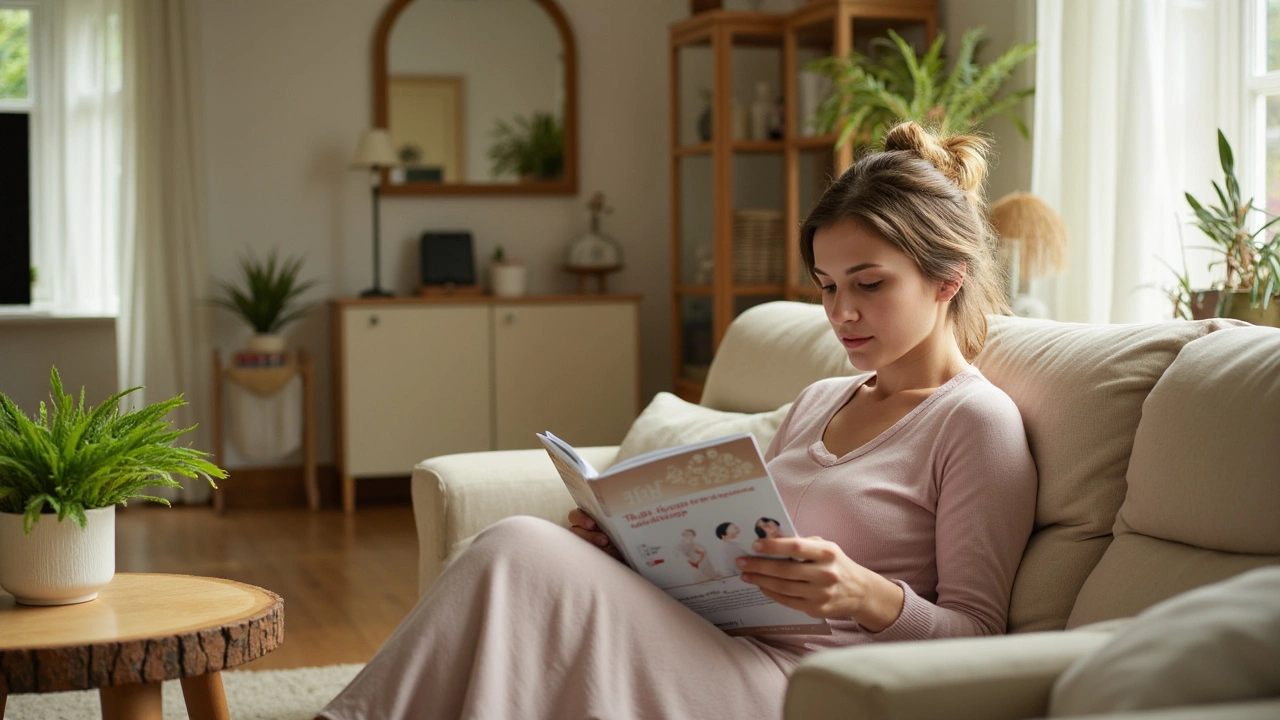Foot Massage: Your Ticket to a Stress-Free Life

Your feet take a beating all day—walking, running, even just standing for hours. No wonder they beg for a little TLC. Foot massage isn’t just about feeling good for a few minutes; it can be your secret weapon for rolling back stress and hitting reset.
If you’ve ever ended a crazy day with heavy, aching feet, you know the relief when someone digs their thumbs into that tired arch. It isn’t magic, though it might feel like it. Foot massage can help untangle knots in your muscles, boost your mood, and even help you sleep better.
The best part? You don’t need an appointment at a pricey spa to get started. You can get a lot of those benefits at home with just your hands, a golf ball, or even a frozen water bottle. Of course, going to a pro takes things up a notch—think deeper relaxation, better technique, and sometimes, those tiny heated towels that make you wonder if you’re living too modestly.
Want to know why your feet feel so connected to your overall stress? There’s actually solid science behind it. Your feet are packed with nerve endings—about 7,000 of them. That’s why a good foot massage can trick your brain into flipping from stressed to serene, faster than you’d think. Stick around to learn which types might be right for you and how to spot a legit massage spot near you.
- Key Benefits of Foot Massage
- Types of Foot Massage You Can Try
- How to Choose the Right Foot Massage Spot
- Tips for the Best Foot Massage Experience
Key Benefits of Foot Massage
It’s amazing how a simple foot massage can work wonders after a long day. You might be surprised just how much it can do—this is not just about feeling pampered. Regular foot massage is linked to lower stress, less anxiety, and even better sleep. Here’s what happens when you give your feet some attention:
- Stress Relief: Pressing and kneading your feet triggers your body’s relaxation mode. This dials down stress hormones and helps your mind let go.
- Improved Circulation: A lot of us sit too much, and our feet pay the price. Foot massage gets your blood moving, which brings oxygen and nutrients down to those tired toes. That’s why people with poor circulation or those who stand all day swear by it.
- Pain Reduction: If you live with flat feet, plantar fasciitis, or just get cramps sometimes, a foot massage can break up tension and ease pain. Reflexology, a type of foot massage, targets specific spots to relieve headaches, back pain, and more.
- Better Sleep: When you relax right before bed, your chances of falling asleep faster go way up. A 2023 study found regular foot massages helped people with trouble sleeping nod off quicker and wake up less during the night.
- Mood Booster: There’s real science here! Hands-on touch can spark endorphin release—those happy chemicals—which means even a ten-minute foot massage can leave you feeling brighter.
| Benefit | Percentage of People Who Agree |
|---|---|
| Reduces Stress | 68% |
| Improves Sleep | 55% |
| Eases Muscle Pain | 60% |
People usually start to notice these perks within a week or two of regular sessions. And you don’t even have to spend an hour every time—a solid 10-15 minutes a few days a week gets results. Pretty good for something that feels so simple, right?
Types of Foot Massage You Can Try
When it comes to foot massage, there's surprisingly more variety than most people expect. Each type has its own vibe and health perks. Let's break down the ones you’ll actually run into, both at spas and for DIY sessions at home.
- Swedish Foot Massage: This is the classic you’ll find at most spas. It focuses on gentle kneading, tapping, and rolling the foot muscles. It’s all about relaxation and melting away tension.
- Deep Tissue Foot Massage: As the name hints, this one gets into the nitty-gritty. The therapist uses slower, firmer strokes to hit deeper layers. If you’ve got sore or tight feet from standing all day, this is a game-changer. Heads up: it can feel intense.
- Reflexology: Here’s where it gets a little science-y. Reflexology is based on the idea that different spots on your foot connect to different organs and systems in your body. Therapists use thumb and finger pressure to target those zones. Some folks swear by it for headaches, digestion, or just to feel balanced.
- Thai Foot Massage: Ever seen those special wooden sticks at foot spas? That’s a big clue you’re in a Thai foot massage. It mixes traditional massage with stretching and acupressure. Expect more active movements and pressure points—it’s energizing, not just relaxing.
- Sports Foot Massage: Athletes go for this one to recover from workouts or prevent injury. It combines deep pressure and stretching to wake up tired muscles and help you bounce back faster.
Wondering which works best for stress relief? According to a report from the American Massage Therapy Association, 77% of people who get foot massage regularly say it helps with general relaxation and stress. You might want to try a couple of types to see which style leaves you feeling like you could float home.
| Type | Main Benefit | Intensity |
|---|---|---|
| Swedish | Stress Relief | Light to Medium |
| Deep Tissue | Muscle Recovery | Medium to Strong |
| Reflexology | Balance & Wellness | Variable |
| Thai | Energy Boost | Medium |
| Sports | Injury Prevention | Strong |
If you’re going for foot massage at home, try starting with a Swedish-style or basic deep pressure movement. Just work from your heel to your toes with your thumbs or knuckles. And if you want to dip your toes (pun intended) into reflexology, there are tons of easy charts online showing which spots to press for different results. You don’t need to be a pro, just a little curious.

How to Choose the Right Foot Massage Spot
Nailing down the perfect place for a foot massage can feel like finding a needle in a haystack. There are so many options, from neighborhood spas to chain clinics and even some sketchy corner shops. Here’s how to pick a spot where you’ll actually unwind and not regret your choice.
First, focus on reputation. Check Google or Yelp for reviews. Look for recent feedback, especially from people who mention stress relief, clean facilities, and skilled staff. If a place averages over 4 stars with a steady stream of happy customers, you’re off to a great start.
Next, check the qualifications. In lots of places, a foot massage is more than just a rub-down—there are professional certifications for reflexology and massage therapy. Most reputable spots will list their therapists’ credentials, either online or right at the front desk. Don’t be shy about asking; you’re paying for expertise.
Location matters. Convenience is huge. Is this spot near your work, your home, or somewhere you already visit? You’re way more likely to stick with regular foot massage sessions if you don’t have to cross town in traffic.
Here are a few practical tips to help you narrow it down:
- Peek at the price list before you book. Some places charge double for fancier settings—you might find the same skill at a smaller, quieter spot.
- If you have special needs (like sensitive skin, mobility issues, or you’re pregnant), call ahead and ask if they can handle it. Most good spots will be honest about what they offer.
- Check for cleanliness. This is non-negotiable. Clean sheets, fresh towels, and squeaky floors mean they probably take your health—and their business—seriously.
- Ask about the products they use, especially if you have allergies or hate greasy lotions. Some places even have unscented or organic options.
- See if you need an appointment or if they take walk-ins. Book ahead for busy weekends or late evenings.
Price can vary a lot depending on where you live and the style you want. Here’s a look at the average pricing for a standard 30-minute foot massage these days:
| Type of Place | Average 30-Minute Cost |
|---|---|
| Basic local shop | $30-$40 |
| Mid-range day spa | $45-$65 |
| Luxury spa | $80 and up |
Here’s one last thing—don’t ignore your gut. If a place looks weird, smells odd, or just gives you the ick, walk away. There are plenty of safe, clean, and truly relaxing options out there for a good foot massage. Your stress-free break should start as soon as you walk in, not after you leave.
Tips for the Best Foot Massage Experience
If you want to get the most out of your foot massage, a few simple tips can make a big difference. Even small tweaks—like setting the right mood or using the right products—crank up the relaxation.
- Stay hydrated: Drink water before and after your session. Massage can boost circulation and may move out toxins, so you want your body to keep things flowing smoothly.
- Speak up: Tell your therapist if something is too intense or if you have sensitive spots. More pressure doesn’t always mean more relief. You know your comfort zone best.
- Dress smart: Choose loose, comfy clothes that are easy to roll up. Most spots will just want your shoes and socks off, but you don’t want tight pants bunching around your calves.
- Avoid big meals: Try not to eat a heavy meal right before a foot massage. A full belly can make you feel sluggish and distract from the relaxation.
- Pick your products: Ask about the creams or oils being used. Some places offer unscented options if you’re sensitive to smells. Natural oils (like coconut or almond) often feel great and don’t gunk up your skin.
- Try some DIY magic: Don’t have time for a pro session? Use a tennis ball under your arches and roll your foot back and forth, or try a frozen water bottle for sore, puffy feet. This is a handy hack for instant stress relief.
- Stick to a routine: Aim for regular sessions—weekly or even every couple weeks—for the best shot at lasting wellness and relaxation.
According to a 2023 survey from the American Massage Therapy Association, nearly 67% of people who get foot massages report better sleep and lower stress levels after regular sessions. You can definitely feel the payoff in day-to-day energy and mood.
| Foot Massage Prep | Why It Matters |
|---|---|
| Hydrate | Keeps circulation and recovery smooth |
| Wear comfy clothes | Avoids discomfort during your session |
| Communicate needs | Gets you the pressure and focus that works |
If you have any medical conditions—like diabetes, neuropathy, or poor circulation—double-check with your doctor before booking that foot massage. It’s always better to make sure you’re safe and set for relaxation.



